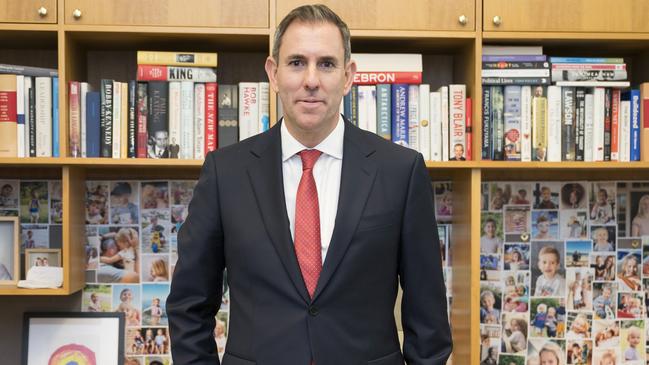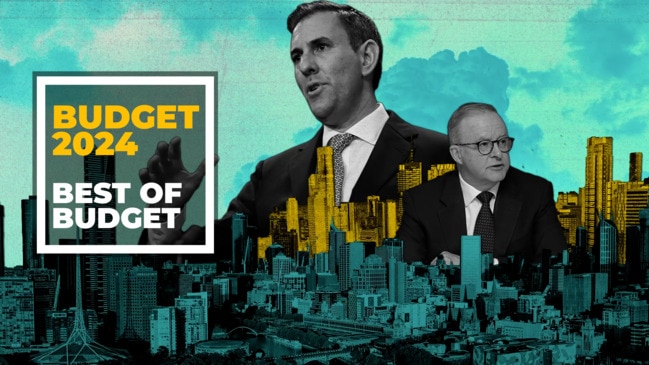
Jim Chalmers’ third budget is an example of popular measures that hopefully appeal to voters rather than responsible economic management in a changing world that Chalmers is otherwise so keen to highlight. It’s a showbag budget with lots of goodies being offered up.
He has ditched standard economic analysis by simply assuming that the expensive cost-of-living measures announced in the budget can hasten the fall in the real rate of inflation. But all sensible economists know that these sorts of measures are stimulatory; they allow consumers to spend the savings on other things. In reality, all they do is push the price pressures into the future when the subsidies are finally removed.
But Chalmers is hoping that the laws of economics don’t apply to him and even enlists the support of Treasury to do this.
“With Treasury now expecting we could get back to the inflation target this year, not next. That means inflation is expected to be lower, sooner.”
Let’s be clear, the Reserve Bank focuses on the trimmed mean of the CPI. It won’t be the raw CPI figures, which are affected by the cost-of-living measures, that will determine the bank’s decision on changing the cash rate. The budget papers tell us that the effect of last year’s measures reduced the recorded CPI by over 50 basis points; it’s just not clear that this had any influence on the cash rate.

There is a possibility that recorded CPI figures feed into inflationary expectations. But the most recent figures on wage growth are not consistent with this hypothesis. The WPI rose by over 4 per cent in the March quarter, at the same time productivity growth was non-existent.
Another possibility is that consumption growth falters significantly in the coming months and this weakness reduces the pricing power of local firms. Of course, such an outcome would not be politically welcomed.
But in any case, we have the stage 3 tax cuts feeding into disposable incomes in the second half of the year and there is still some savings buffer left over from the pandemic. In any case, the budget assumes that consumption will grow by 2 per cent in 2024-25.
The bottom line here is that the budget assumption that inflation will return to the target range of 2 to 3 per cent by the end of this year is extremely uncertain. It seems to be driven by Chalmers’ desperate ambition to set the scene for lower mortgage rates late this year and early next year. It’s a high-stakes bet.
One of the Achilles heels of Labor’s term in office has been the fall in real household disposable income, the best measure of living standards. In 2022-23, there was a fall of 2.5 per cent and a further fall this financial year.

The budget assumes there will be rapid turnaround in real household disposable income, in part because of the smaller drag on real incomes because of lower inflation. The income tax cuts also return some of the bracket creep that has been boosting government revenue.
The budget forecasts growth in real disposable income of 3½ per cent in 2024-25 “if realised, would be the fastest rate [of growth] in over a decade (excluding the pandemic).” But as they say, there’s many a slip betwixt the cup and the lip.
A central feature of this year’s budget is the projection of four substantial budget deficits over the forward estimates after this year’s modest surplus of $9.3bn. The size of these deficits ranges from $43bn or 1.5 per cent of GDP in 2025-26 to $24bn or 0.8 per cent of GDP in 2027-28. Under normal circumstances, most governments would be embarrassed to put forward this set of figures – four years of payments exceeding receipts by substantial amounts.
But the government has clearly decided that balancing spending and revenue is not a top priority; indeed, it doesn’t seem to be a priority at all. Even Wayne Swan, when he was treasurer, had a set of rules that included balancing the budget over the cycle as well as keeping the growth of real spending to 2 per cent per year. The fact that he didn’t achieve this doesn’t take away the importance of having fiscal rules.
Chalmers is not having a bar of any binding fiscal rules. The budget papers set down a series of platitudes such as “improving the efficiency, quality and sustainability of spending” and “focusing new spending on investments and reforms that build the capability of our people … and support action on climate change.”
There is not one specific number contained in Chalmers’ “fiscal rules”. Without the discipline of tightly specified, well-considered rules, we should expect ongoing fiscal sloppiness where nearly every plea for more funding is agreed to.
This year’s budget heralds a new era in which balancing spending and revenue is seen as old hat. By the same token, spending must conform to the values regarded as central to the Labor cause. The hope is that it will be sufficient to Hoover up enough votes to retain government without imposing too much economic harm.








All budgets are a combination of electoral marketing and economic substance. The ratio of these two factors varies, although there has been a clear drift over time to glitzy hype over serious economic analysis.